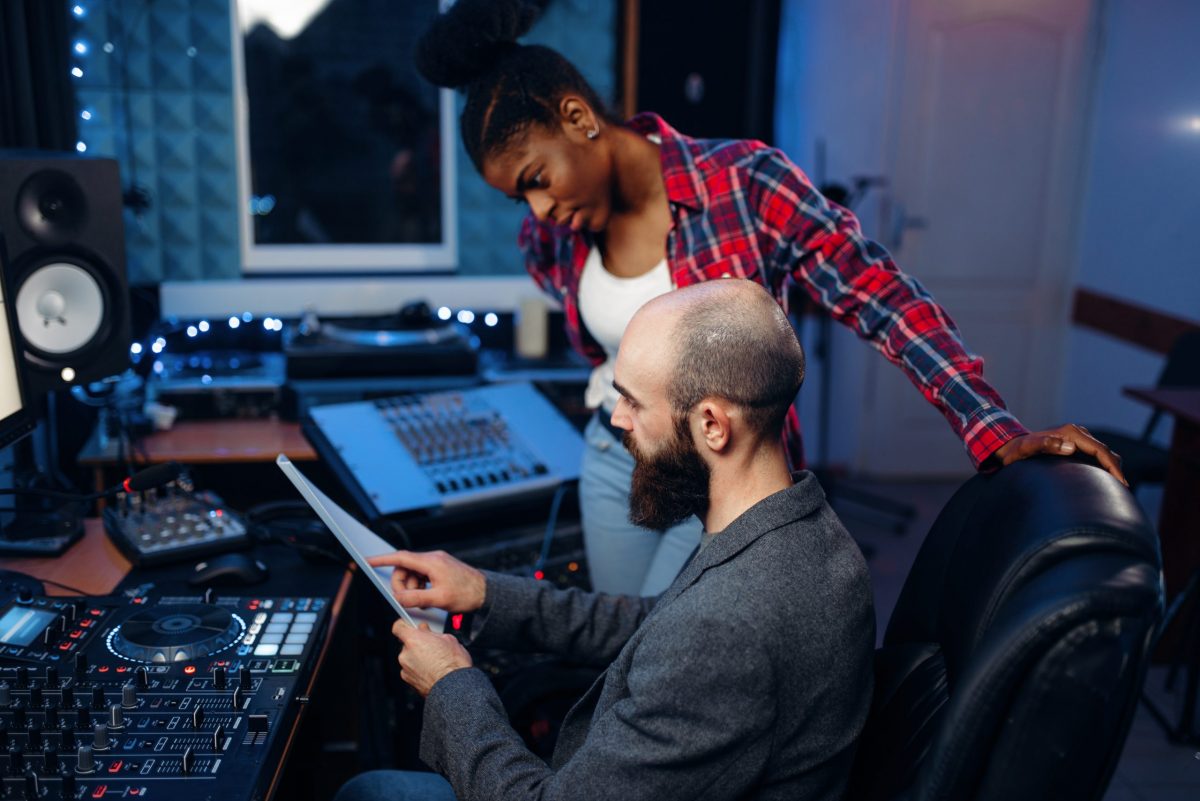Music is a powerful form of expression that can evoke a wide range of emotions. One of the essential elements of music is the beat, which provides the underlying rhythm and structure of the song. Beats are the driving force behind music and play a crucial role in determining the overall feel and energy of a track.
Moreover, this article is designed to help aspiring music producers and beatmakers understand the process of creating musical beats. The goal is to provide a comprehensive guide to beat-making, from the beginning to refining the final product. Whether you are new to beat-making or already have some experience, this article will give you the knowledge and tools you need to elevate your beat-making skills to the next level.
The Pulse of Music: A Guide to Understanding the Role of Beats
A beat is the underlying rhythm of a song that provides structure and sets the pace for the music. It is the foundation upon which other song elements, such as melody and harmony, are built. Beats can be simple or complex and can vary in tempo and feel.
Moreover, beats play a crucial role in determining the overall feel and energy of a song. They provide a rhythmic base for the other elements of music, such as melody and harmony, and can have a significant impact on the listener’s experience. People can use beats to create various moods, from energetic and uptempo to slow and contemplative.
There are many different types of beats in music, ranging from simple 4/4 beats to complex polyrhythms. Some of the most common types of beats include hip hop, house, techno, and trance. Each type of beat has its own specific feel and energy and can be used to create different musical styles.
When creating beats, it is crucial to understand the different types and their role in various musical styles. This enables you to create beats that fit well with the kind of music you are trying to make and helps you achieve the desired feel and energy in your music.
Essential Tools for Making Beats
To create musical beats, you need a few essential pieces of equipment and software. The most crucial piece of equipment is a computer, which will be your primary tool for making beats.
You will also need a digital audio workstation (DAW), a software program that allows you to create, edit, and produce music. Some popular DAWs include Ableton Live, FL Studio, and Logic Pro X.
In addition to a computer and DAW, you might consider investing in a MIDI keyboard or drum pad, as these can make it easier to create beats and play other instruments. Furthermore, a pair of studio headphones or studio monitors can help you monitor your beats and ensure they sound good.
Once you have all the necessary equipment and software, you’ll want to set up a comfortable workspace for making music. This may involve setting up your computer, keyboard, and monitors ergonomically so you can work efficiently. Also, ensure a quiet and distraction-free environment, as this will help you focus and stay creative.
Now that your workspace is set up, you can start exploring your DAW and learning how to use it to make beats. Take some time to familiarize yourself with the various tools and features, as this will make it easier to create beats and produce music.
How to Make Beats
The process of making a beat can be broken down into several steps, including choosing a tempo, selecting and arranging samples, and adding effects.
Here is a step-by-step guide for making beats:
- Choose a tempo: Select a tempo that is suitable for the type of music you are making.
- Select and arrange samples: Choose the sounds you want to use for your beats, such as drum sounds and basslines, and arrange them in a way that creates a cohesive and engaging rhythm.
- Add effects: Use effects, such as reverb and delay, to shape the sound of your beat and make it more polished.
- Refine the beat: Refine and make adjustments to ensure it sounds polished and professional.
You can use many different techniques to make beats, such as layering and chopping samples. Layering involves adding multiple sounds to create a fuller and more complex beat, while chopping involves cutting up samples and rearranging them to create new sounds and rhythms.
Experimenting with different techniques will help you find your own unique style and develop your beat-making skills.
Additionally, the various elements of a beat, such as drums, basslines, and synths, play a crucial role in determining the overall feel and energy of the music.
Moreover, when making beats, it’s essential to choose the right sounds and arrange them in a way that complements each other, creating a cohesive and engaging rhythm.

Refining the Beat
Once you have created a basic beat, it’s time to refine it and make it sound polished. This may involve adjusting the levels of the different elements of the beat, using equalization to shape the sound, and adding effects such as reverb and delay.
Furthermore, equalization, compression, and other sound-shaping techniques are crucial in refining and making the beat sound polished.
Equalization allows you to adjust the levels of different frequencies in the sound, while compression helps to even out the levels and add punch.
Effects, such as reverb and delay, can add depth and dimension to the sound of the beat. These effects can help create a more spatial and atmospheric sound, making the beat more interesting and varied.
Experimenting with different effects and finding the right balance between these and the other elements of the beat will help you refine the sound and make it stand out.
With these steps in mind, you are now ready to refine your beat and make it sound polished and professional. Take your time and experiment with different techniques and sounds, as this will help you develop your skills and find your unique style.
Adding Melody and Other Elements
Once you’ve refined your beat, it’s time to add melody and other elements to complete the track. This may involve adding a bassline, synths, and other instruments. You might also consider adding vocals or other vocal elements to the song.
Choosing the right sounds and instruments is crucial when adding melody and other elements to the beat. You want to select sounds and instruments that complement the beat and create a cohesive and engaging musical experience.
Furthermore, arrangement is key to turning the beat into a complete song. This involves arranging the different elements of the song, such as the beat, melody, and harmony, in a way that creates a cohesive and engaging musical experience.
Additionally, experimenting with different arrangements and finding the right balance between the various elements will help you create a complete and polished song.
How to Get Your Beat Heard by Many People
Have you created a beat and want everyone to hear it, but don’t know how? There are thousands of ways to do this, but one of the fastest ways to kickstart your music career is by buying streams on Spotify from a reliable source.
If you don’t want the typical, challenging way to get streams, then use a Spotify ranking booster to stay ahead of the competition and stand at the top with your idols.
What Makes a Good Beat?
When it comes to making beats, there are several factors that contribute to making a good beat. Let’s take a closer look at some of these factors.
Enjoyment and Structure: A good beat should be something you enjoy listening to and should also be well-crafted with a solid overall structure. If you don’t like the beat you’ve created, it’s unlikely anyone else will either. Paying attention to the overall structure of your beat is also crucial, as it can make or break a listener’s experience.
The Importance of Tempo: The tempo, or the speed at which your beat is played, is another essential aspect to consider. It’s vital to find a comfortable tempo to listen to and work with. However, it’s important to remember that the tempo can also affect the overall feel and energy of your beat.
Balancing Variation and Repetition: To keep your listener engaged, it’s crucial to find the right mix of variation and repetition in your music. Too much repetition can make your beat boring and predictable, while too much variation can make it difficult for someone without much musical knowledge to follow. Producers need to find a good balance between variation and repetition in their music, making it interesting yet easy to understand.
Combining Technique and Emotion: Finding a balance between technique and emotion is essential in making beats. While having solid technical skills is important, it’s just as important to inject emotion and feeling into your beats. Without emotion, your beat can come across as sterile and lifeless, so don’t be afraid to experiment with different sounds and techniques.
Originality and Uniqueness: Finally, one of the most critical aspects of creating a good beat is ensuring it’s original and unique. Copying someone else’s beat or sound is not the right choice. Instead, be creative and experiment with different sounds and ideas. Your goal should be to create a sound that is distinctly yours and stands out from the rest.
Final Thoughts
Making musical beats is a challenging and rewarding process that requires a combination of technical skills and creative vision. From selecting the right equipment and software to refining the final product, this article provides a comprehensive guide to help elevate your beat-making skills to the next level.
Whether you are new to making beats or have some experience, this article has given you the knowledge and tools needed to create beats that sound professional and engaging.
By understanding the steps involved in making beats and what makes a good beat, you can create music with a strong foundation of rhythm and structure.
Also, with a clear idea of what you want to achieve, a well-equipped workspace, and a commitment to experimenting and creativity, you will be well on your way to making beats that sound great and stand out. So start making beats today and see where your creativity takes you!

